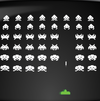Convenient private cloud with Seafile
|
Graphical Client
The graphical client makes the settings even easier. However, it's available only for Ubuntu and its derivatives as a binary package, whereas users of other distributions need to rely on a compiler.
After the installation has finished, the software prompts for the data directory before the first Seafile applet startup. Seafile will create this directory automatically and inserts an icon into the task list (Figure 2).
This client can't provide ways to create libraries or query them from the server either, but it does provide a quick Seahub interface download or synchronization with an existing directory. Like the command-line version, the graphical Seafile client starts its own HTTP server, but it uses port 13420 instead of 13419. To list local libraries, interrupt synchronization, change server addresses, or transfer encrypted files, the client uses a web browser.
Seahub Interface
The web-based Seahub interface allows you not only to create libraries but also to delete, publish, and manage their content. You can also create and remove work groups, create contact lists, and edit files online.
Users registered as administrators can add and delete users, reset passwords, and grant and remove administrative rights (Figure 3). Along with user administration, admins can delete groups or libraries of other users and post notifications that can subsequently appear to all users.
Buy this article as PDF
Pages: 6
(incl. VAT)






